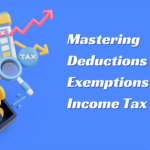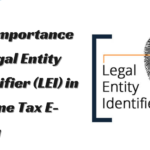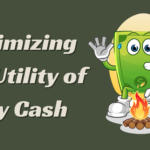Tense Chart in English: Rules and Example
In English, verbs are often used to show or explain what happened or when it happened. These verbs sometimes change shape to show when an action, event, or state happened. The verbs that do this are called “tenses.” There are three different kinds of tenses: the present, the past, and the future. Each type has four additional parts: simple, continuous, perfect, and perfect continuous. So, in this piece, we’ll talk in-depth about tense charts, including rules and cases.
Different dictionary definitions of tense
The meaning of “tense” is slightly modified in the Merriam-Webster Dictionary. “tense” is defined as “any of the forms of a verb that can be used to show time of the action or situation that the verb describes.” The article defines “tense” as “a difference in the form in a verb to show differences in time or duration of the action or state it refers to.” Collins defines “tense” as “any form of a verb that shows when an action took place,” whereas Cambridge defines it as “any form of a verb that shows when an action took place.”
Chart of Different Tenses
There are mainly three kinds of tenses:
- Present Tense
- Past Tense
- Future Tense
There are also four subforms, which are:
- Simple Perfect Continuous
- Perfect on-going
Tense Chart Rules
| Tenses | Forms |
| Present Tense | 1. Simple Present Tense 2. Present Perfect Tense 3. Present Continuous Tense 4. Present Perfect Continuous Tense |
| Past Tense | 1. Simple Past Tense 2. Past Perfect Tense 3. Past Continuous Tense 4. Past Perfect Continuous Tense |
| Future Tense | 1. Simple Future Tense 2. Future Perfect Tense 3. Future Continuous Tense 4. Future Perfect Continuous Tense |
Below is the table of instances of Tense Chart :
| TENSE | FORM | EXAMPLE |
| Present Tense | Simple Present Tense | She Drives A Jeep |
| Present Perfect Tense | She Is Driving A Jeep | |
| Present Continuous Tense | She Has Driven A Jeep | |
| Present Perfect Continuous Tense | She has been driving a Jeep since morning |
| TENSE | FORM | EXAMPLE |
| Past Tense | Simple Past Tense | She drove a Jeep |
| Present Past Tense | She was driving a Jeep | |
| Past Continuous Tense | She had driven a Jeep | |
| Past Perfect Continuous Tense | She had been driving the Jeep since 8 am |
| TENSE | FORM | EXAMPLE |
| Future Tense | Simple Future Tense | She will drive a Jeep |
| Present Future Tense | She will drive a Jeep | |
| Future Continuous Tense | She will have driven a Jeep | |
| Future Perfect Continuous Tense | She will have been driving the Jeep at 7 am tomorrow |
What does Tense Chart have to do with it?
If you want to learn English phrases well, you need to learn more than just what they mean in a book. You should also learn how to use each of their forms correctly and how to change the way they look. Most people who want to learn English start by memorizing these forms, both for normal verbs and for irregular verbs that are more difficult.
For example, you may know what the word “talk” means in the dictionary, but before you use it to talk about something that will happen in the future, you need to know what your choices are.
Talk can be used in any of the following ways to talk about something that will happen in the future:
- This afternoon, I’ll talk to my mother.
- This afternoon, I’m going to talk to my mother.
- This afternoon, I’m going to talk to my mother.
People think of set times when they hear the word “tense” in English. Even though this is usually the case for things that happen in the present, the past, or the future, it isn’t always the case. Let’s take a look at this example:
In an hour, their trip to Bangkok will take off
The word take off is used in the simple present tense, but it refers to something that will happen in the future.
Each tense has different parts or forms that show different things. The parts of each tense show if an action, state, or event is over and how a word links to other verbs in the same time frame. I learn English, for example. I’m learning English, and so on. Both use the present tense, but their meanings are different. In the first line, the word refers to an action that happens often or regularly. But the word in the second line makes it sound like the action isn’t done yet. Look at the following case:
When someone knocked on the door, we were having dinner
There are two main verbs in this sentence: eat and knock. Both sentences are in the past tense, but they mean different things. Had been eating is the perfect continuous past, and knocked is the simple past. It shows that the act of eating was still going on and not done when the knocking happened.
Conclusion
A mood chart with rules and examples is important to learning a language. In fact, a huge number of ESL students make the Tense Chart on their own. Aside from the common verbs used in everyday English talks, each student learns English in a different way and may come across completely different sets of verbs. This makes the method of customizing a tenses formula chart useful for your own language trip.


















